ASAM OpenSCENARIO® 2.0
A groundbreaking industry standard, consisting of a modern programming language and a domain model specifically designed to verify the safety and functionality of Automated Driving Systems and ADAS. Foretellix is leading the standard development in ASAM and offering the first native OpenSCENARIO 2.0 implementation with the Foretify™ platform.

Designed for AV and ADAS
OpenSCENARIO 2.0 is designed to enable advanced verification of Automated Driving Systems by modeling the traffic, VRUs, and other actors as scenarios the system may encounter in the real world.
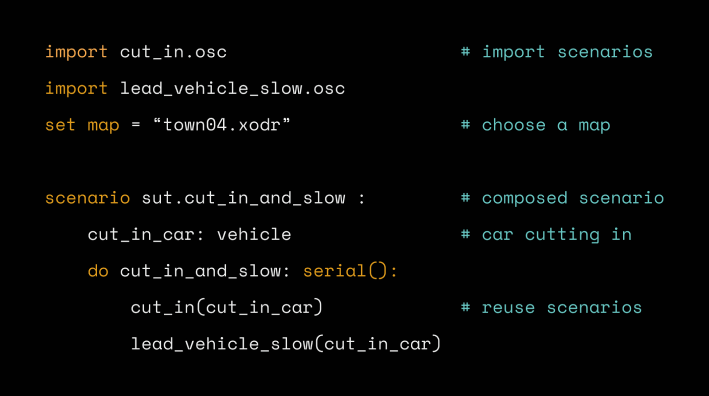
Composition and Reuse
Simple scenarios can be used as building blocks to define more complex scenarios . This maximizes reuse with the ability to compose increasingly more challenging scenarios to test the SUT, and easily extend the test base to cover new geographical regions, vehicle variants, ODD expansion, and OTA updates
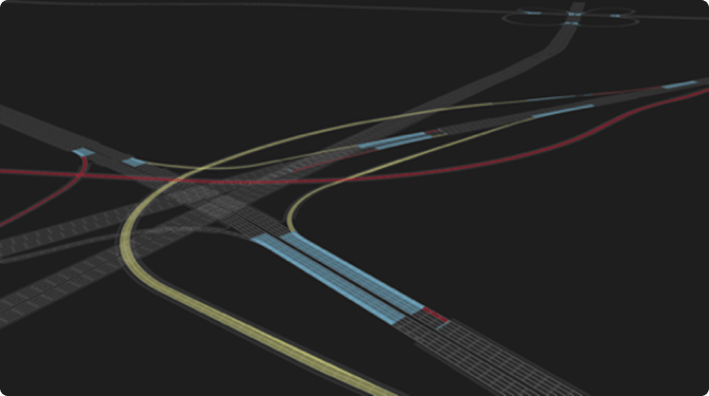
Map and ODD-Agnostic
Scenario intent can be captured independently of any specific map. This enables the automatic and random selection of map locations during large-scale test generation to simplify test automation and accelerate ODD expansion.
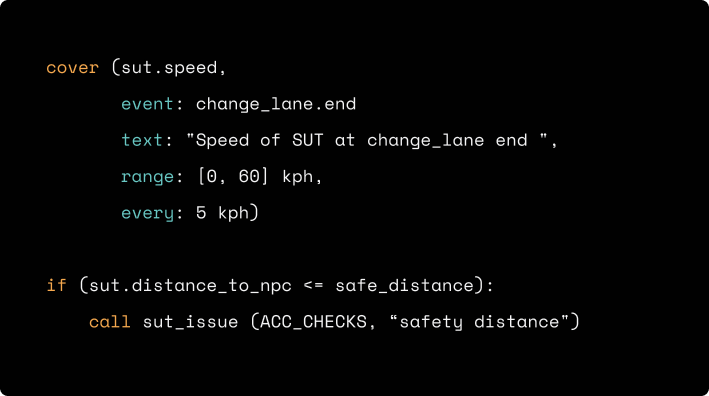
Measurability
With OpenSCENARIO 2.0 you can capture coverage goals to objectively measure how well the SUT has been tested in the ODD, KPIs to measure performance, and checks to assess test pass/fail criteria based on the system requirements.
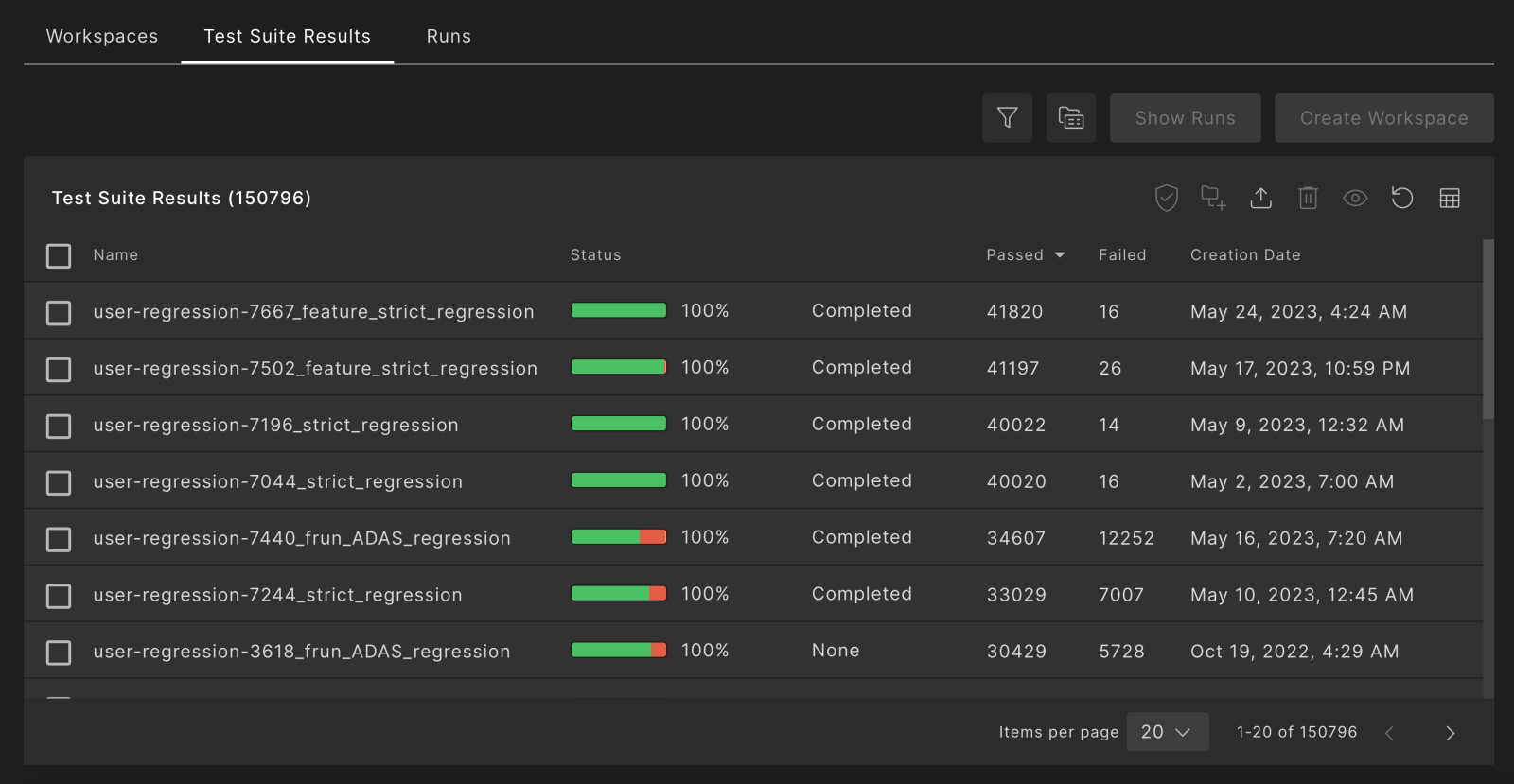
Designed for Automation and Scale
OpenSCENARIO 2.0 enables the automatic generation of a multitude of concrete scenarios from a single abstract scenario. It also allows for monitoring the execution, results, and coverage of tests executed at scale. This facilitates the systematic and rigorous testing required to ensure the safety of AVs and ADAS.
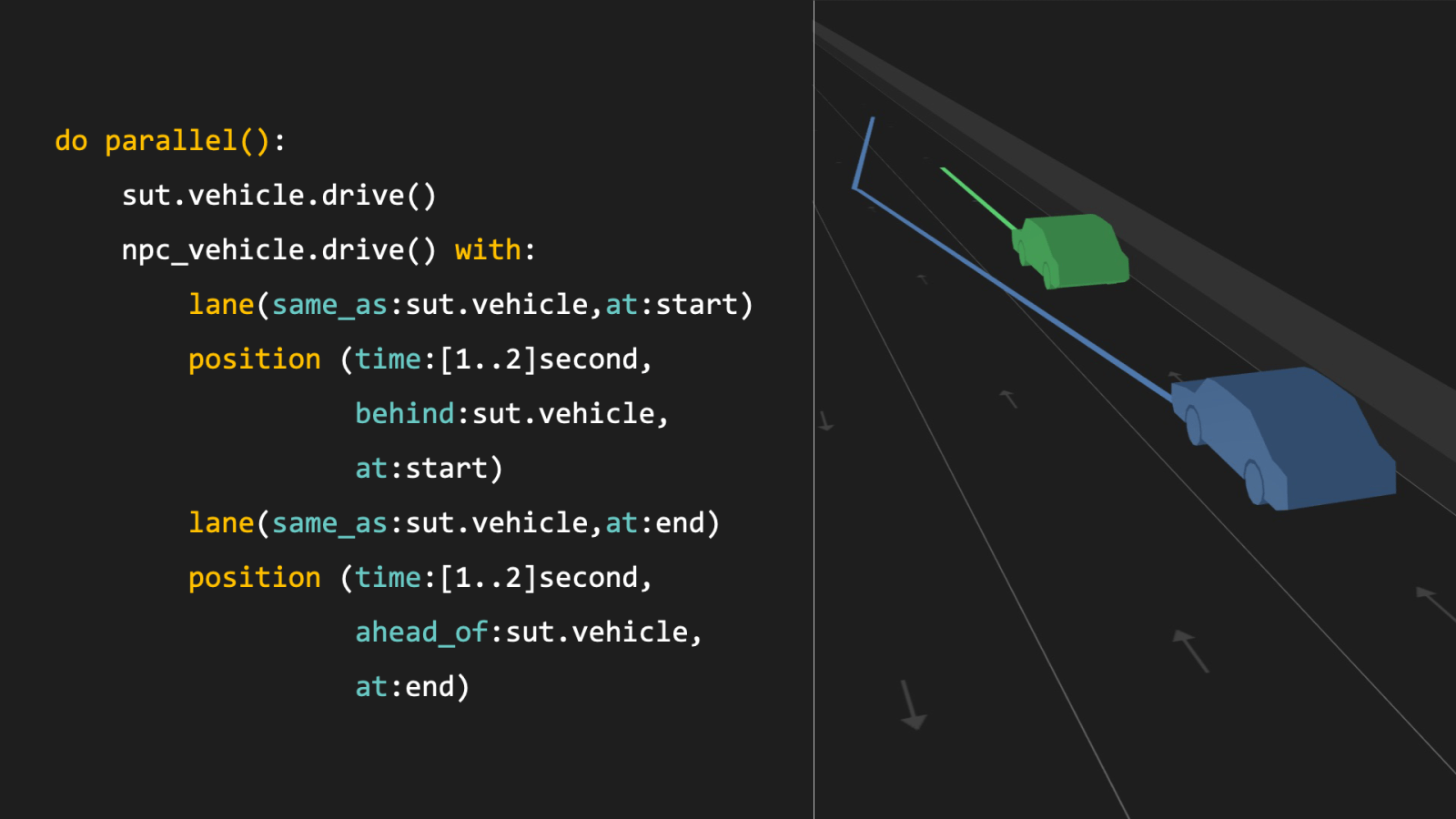
Human and Machine-Readable
OpenSCENARIO 2.0 uses formal declarative descriptions that are simple for humans to understand and can be processed by tools to automatically generate a multitude of valid concrete scenarios for large-scale virtual testing.
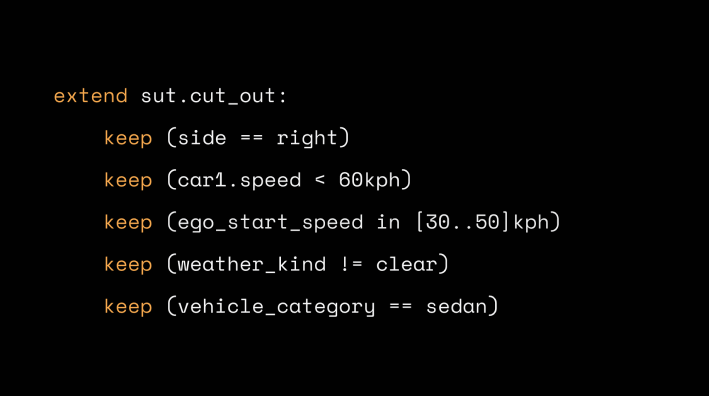
Constraints-Based Language
Constraints are used to define dependencies and relations between attributes and behaviors. This allows for flexible and seamless steering of automated testing tools towards a specific ODD, coverage gaps, or certain SUT functionality.


Abstraction
The language supports three abstraction levels: Concrete, Logical, and Abstract. Abstract scenarios provide a powerful way to specify scenario intent in an intuitive, human-readable format, including the ability to define dependencies and relations between attributes and behaviors for delivering the highest level of automation and scale
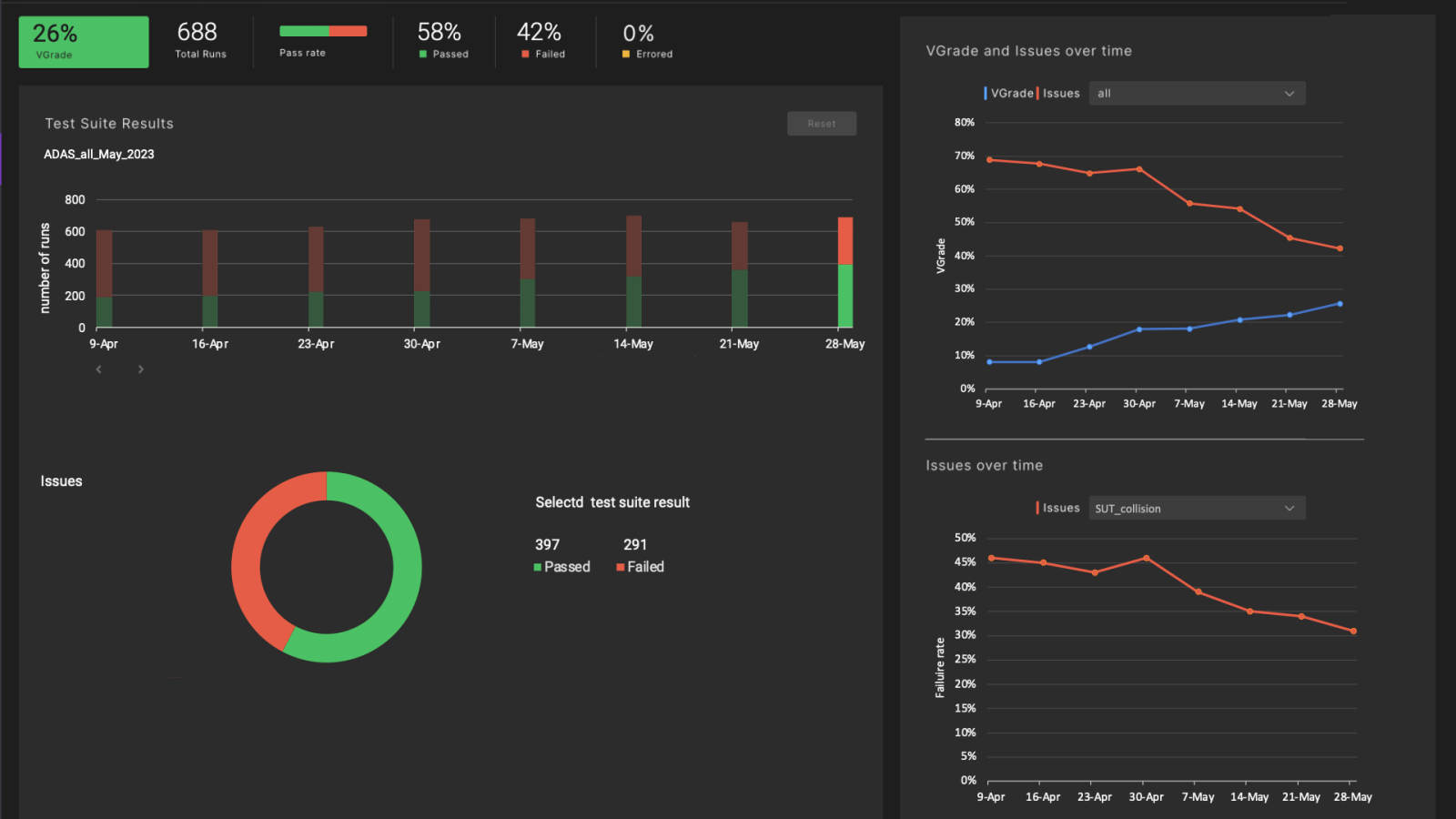
Industry's First Native OpenSCENARIO 2.0 Platform
Foretify is the first V&V platform to offer native OpenSCENARIO 2.0 support. It takes full advantage of the standard capabilities to help customers accelerate the development and deployment of AVs and ADAS.
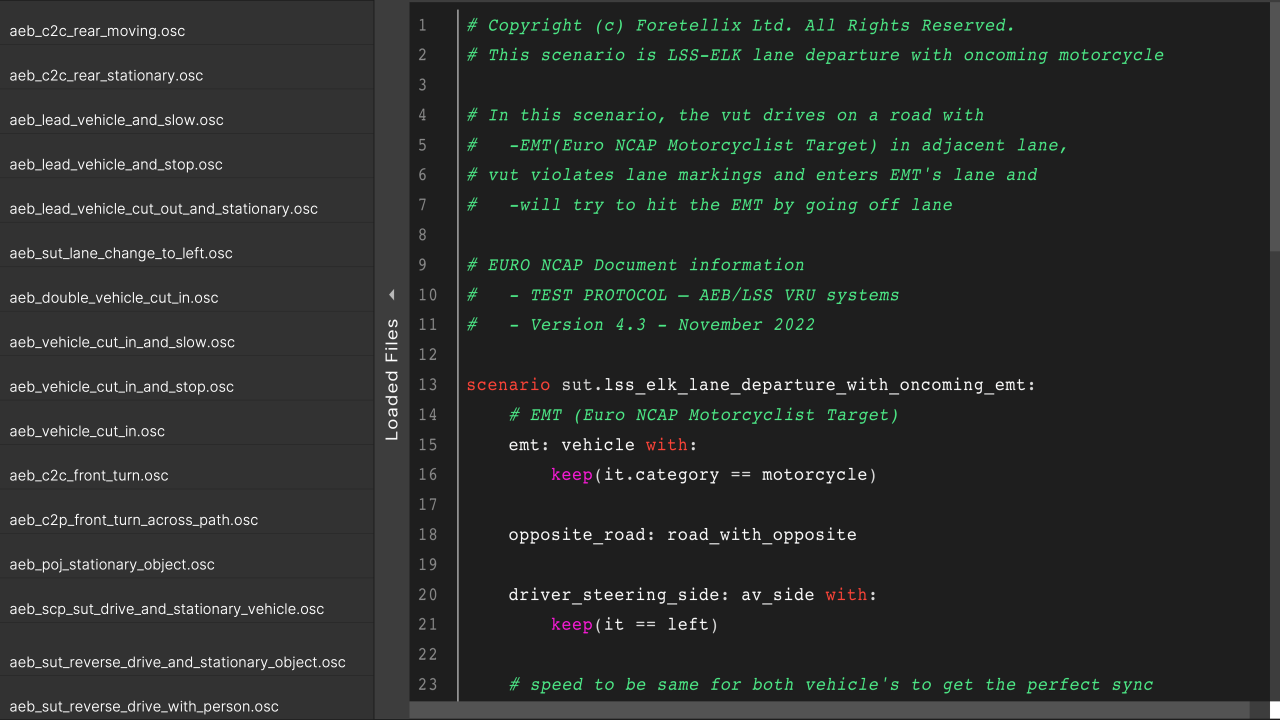
Industry's Largest OpenSCENARIO 2.0 Library
Foretellix’s V-Suites are the most comprehensive OpenSCENARIO 2.0 libraries including predefined test plans , abstract scenarios, maps, coverage metrics, KPIs, and checkers. Foretellix offers V-Suites for Level-2 ADAS, Level-3 Highway Pilot, Level-4 Trucking, and Level-4 Mining applications.
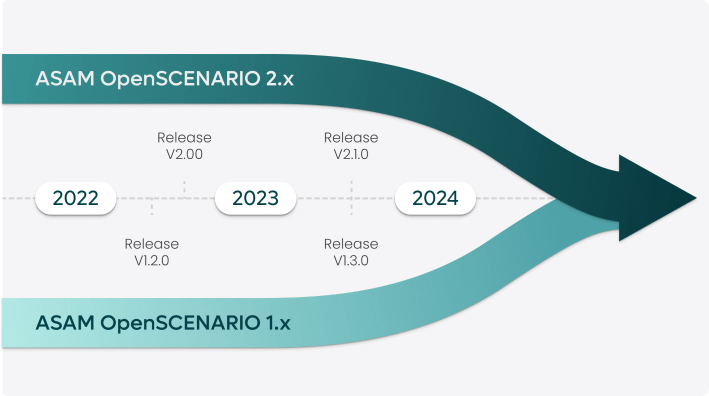
Next generation OpenSCENARIO standard
OpenSCENARIO1.x is a machine-readable XML schema which is designed to be a trajectory interchange format for concrete or logical scenarios. OpenSCENARIO2.x is a human readable programming language for specifying scenarios at a higher level of abstraction in addition to providing alternative ways to express logical and concrete scenarios. The ASAM roadmap converges the two versions into the OpenSCENARIO 2.X Domain Specific Language.

Led by Foretellix, Supported by the Industry
The standard development is led by Foretellix with industry-wide participation and support including OEMs, Tier-1 suppliers, and tool providers.
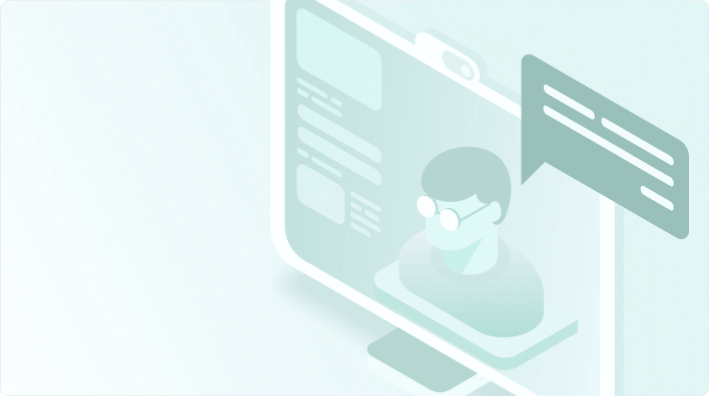
Watch OpenSCENARIO 2.0 Expert Webinars
In our OpenSCENARIO 2.0 webinar series, Foretellix experts explain how to use the language and provide pragmatic tips about methodology, flow, and reuse, as well as suggest a practical adoption process that allows leveraging your existing assets to gradually migrate to an OpenSCENARIO 2.0 automated flow.